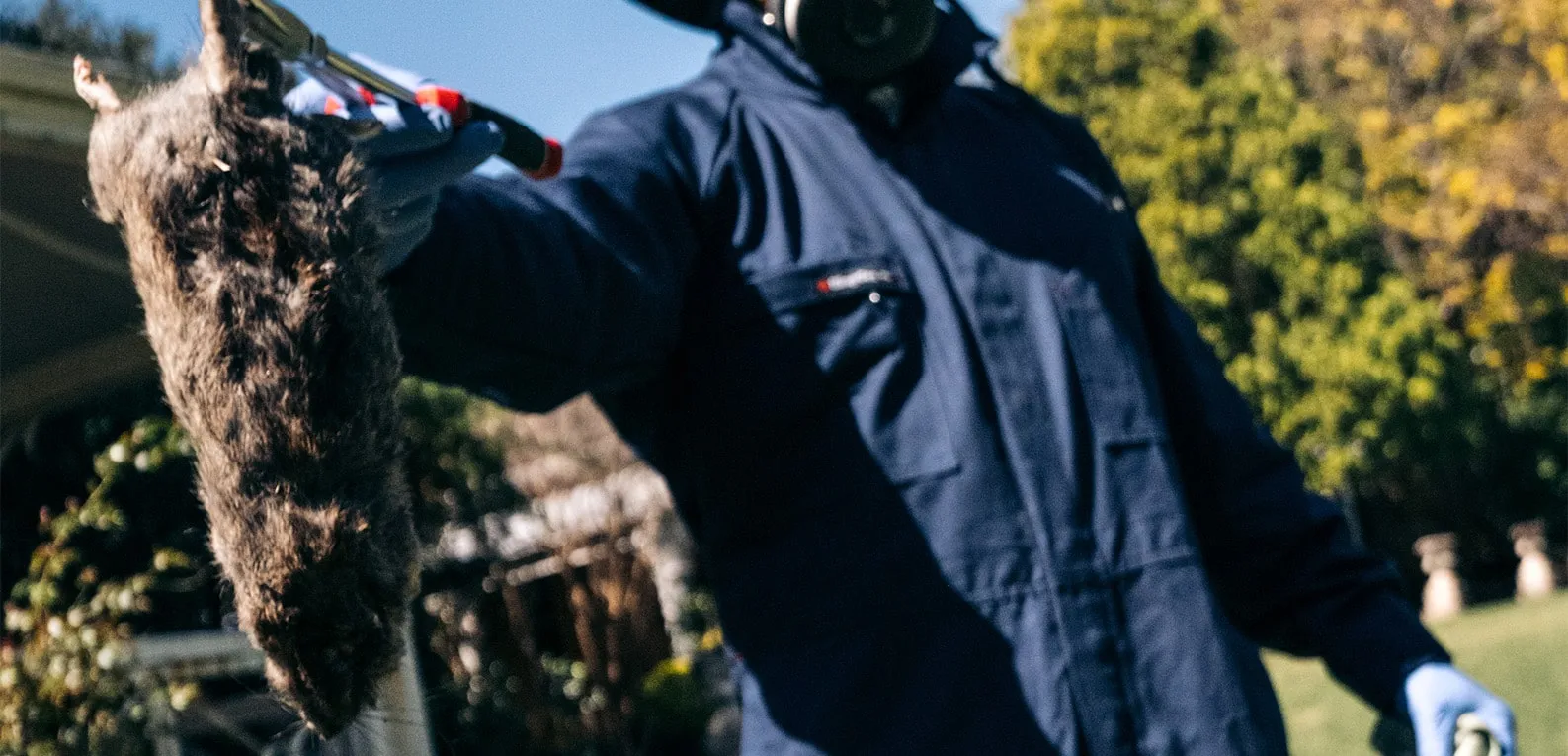Green Guardian: Unveiling Natural
Rat Control & Pest Control Solutions
for Sydney Homes
Your Guide to Rat Control
Sydney’s vibrant ecosystem, coupled with its warm climate is the main attraction for both tourists and residents. However, it also creates a haven for unique, unwelcome visitors.
While traditional rat control*(link your website) and pest control methods can offer quick fixes, they are unfortunately not the best choice for our environment.
This is why there’s a growing movement among Sydney residents toward natural pest control solutions. These methods not only effectively mitigate the menace of rodents but do so in a way that’s harmonious with our environment and health.
Whether you’re a homeowner concerned about the safety of your family and pets or an environmentally conscious individual seeking sustainable living practices, natural pest control offers a promising alternative.

Common Sydney Pests: Rat Control and Mice Control 101
Sydney’s environment hosts a variety of unwelcome guests. Among these, the most common invaders are:
- Rat Control and Mice Control*(link your website): Rats and mice are perhaps the most dreaded pests, especially in urban areas like Sydney. They not only cause damage to property but also pose health risks through the diseases they can spread.
- Cockroaches Control: Known for their resilience, cockroaches can survive under various conditions. These pests are not only a nuisance but can also carry diseases, making their control a priority in household management.
- Spiders Control: With Australia home to some of the world’s most venomous spiders, it’s no surprise that they top the list of concerns for many Sydney residents. Though not all spiders are harmful, the presence of any can cause discomfort and fear.
- Ants Control: These small but mighty creatures can quickly become a significant problem when they invade your home in search of food. Their persistence and the speed at which they colonise can make them particularly challenging to manage.
Understanding the Sydney Climate:
Sydney’s climate plays a crucial role in influencing pest behaviour and infestation levels throughout the year.
Characterised by warm summers and mild winters, our coastal climate creates the perfect breeding ground for various pests. However, it also allows a rich diversity of native species that can sometimes encounter secondary poisoning from the standard pest control procedures we have been using.
Dr Davis, a senior lecturer at Edith Cowan University, said research had shown secondary poisoning was widespread throughout ecosystems around Australia and had been detected in several species such as bobtail lizards, snakes, and dingoes.
By choosing natural alternatives for rat control and mice control, we can ensure we protect our native environment, whilst still avoiding unwanted guests.
Top Natural Pest Control Methods:
Essential Oils:
Essential oils like lavender, peppermint, or tea tree oil can be used as effective pest repellents against mosquitoes, ants, and rodents.
Diatomaceous Earth:
Diatomaceous earth, a natural powdery substance, dehydrates insects on contact, serving as a lethal yet non-toxic pest control method for humans and pets.
Natural Repellents:
Certain plants like citronella, lavender, and marigolds act as natural pest deterrents when strategically placed, while a water and vinegar solution can deter ants and other insects when sprayed on surfaces.
Physical Barriers:
To prevent pests from entering your home, consider installing screens, using door sweeps, and sealing cracks and crevices.
DIY Pest Control Recipes:
To keep your home pest-free using natural methods, we’ve compiled easy-to-make DIY recipes. These solutions use ingredients found in most households, ensuring you can tackle pests safely and efficiently without harming the natural wildlife.
Peppermint Oil Spray for Rats, Mice and Spiders
- Ingredients: 10-15 drops of peppermint essential oil, 1 cup of water, 1 teaspoon of dish soap.
- Instructions: Mix the peppermint oil with water and dish soap in a spray bottle. Shake well. Spray around doors, windows, and any areas where pests are frequent. Reapply every week for the best results.
Vinegar Ant Deterrent
- Ingredients: 1 part water, 1 part white vinegar, a spray bottle.
- Instructions: Mix equal parts of water and vinegar in a spray bottle. Shake well. Spray directly on ants or on ant trails and entry points. Repeat as needed to deter ants from returning.
Citrus Peel Insect Repellent
- Ingredients: Peels from 2 oranges or lemons, 2 cups of water.
- Instructions: Boil citrus peels in water for 10 minutes. Allow the mixture to cool, then strain. Pour the liquid into a spray bottle and apply to areas infested with insects. This solution is particularly effective against spiders and ants.
Coffee Grounds Feline Repellent
- Ingredients: Used coffee grounds.
- Instructions: Spread used coffee grounds around your garden or at entry points to deter cats. The smell repels felines without causing them harm, keeping them away from your property.
Sydney-Specific Plants for Pest Control:
Incorporating Sydney-specific native plants into your garden is an eco-friendly and effective approach to pest control. These plants naturally repel common pests through their unique aromas and chemical compounds, reducing the need for chemical pesticides.
- Lemon-Scented Gum (Corymbia citriodora): Natural mosquito repellent
- Woolly Bush (Adenanthos sericeus): Practical defence against pests with dense foliage.
- Sydney Golden Wattle (Acacia longifolia): Secretes an anti-weed and anti-pest substance.
Sustainable Practices for Long-Term Pest Prevention:
Adopting sustainable practices for long-term pest prevention is not only beneficial for your garden but also contributes positively to our environment. Here are a few eco-friendly measures that can make a significant difference:
- Proper Waste Management: Ensure that your waste, especially organic waste, is disposed of properly. Compost organic material if possible, and secure trash bins tightly to prevent attracting pests.
- Sealing Entry Points: Regularly inspect your home and garden for potential entry points for pests. Use natural materials like sand or diatomaceous earth to block their paths and keep them at bay.
- Maintaining a Clean Environment: A clean garden is less attractive to pests. Regularly clear away debris, fallen leaves, and stagnant water to eliminate potential breeding grounds for pests.
By integrating these practices into your daily routine, you can maintain a pest-free garden and contribute to a sustainable and healthier environment.
Expert Insights and Local Resources:
Utilising expert insights and local resources is a crucial way we can ensure we’re using the best methods and approaches to pest control, rat control, and mice control in particular.
The top authority on natural pest control in the Sydney area is Dr Davis from ECU, as we mentioned earlier in our guide. Davis encourages people to take a holistic approach, as in their expert opinion it is hardly ever necessary to use these absolute forms of bait.
He says:
“I would recommend people seal water and power inlets, holes in skirting boards and gaps or holes in grain storage facilities,”
“In a commercial setting, investing in modern vermin-proof facilities can be more cost-effective in the long run than buying baits. They certainly come with a reduced risk to native wildlife.”
It’s important we listen to the experts on this topic, as the cost of traditional pest control is mounting, with a recent study finding over 70 percent of the native southern boobook owls have toxic levels of pest control poison in them.
If you’re serious about making a change, we recommend learning more from these local resources, where you can seek professional advice:
- *insert your website name and link here*
- NSW Government Pest Control Advice
- NSW Local Business Directory – Natural Pest Control
Conclusion:
Shifting to natural pest control in Sydney is the right choice for our wildlife and a healthier environment, as traditional methods can harm native species. By investing in vermin-proofing and natural deterrents, we can reduce these impacts in a sustainable way.
This eco-friendly approach is not only recommended by experts, but also cost-effective and. Explore local resources, seek advice, and embrace sustainable practices for a healthier planet. Every small change helps our environment.

Book Now To Receive 10% Off
Secure your pest-free environment in Sydney today! Book now and enjoy a 10% discount on your pest control service.
Services
- Ant Control
- Bed Bug Control
- Bee Removal
- European Wasp Control
- Bird Lice Control
- Carpet Beetle Control
- Cockroach Control
- Commercial Pest Control
- Rodent Control
- End of Lease Flea Treatment
- European Wasp Control
- Flea Control
- Fly Control
- Fruit Fly Control
- German Cockroach Control
- Industrial Pest Control
Services
Contacts





